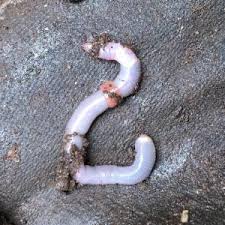Octolasion cyaneum: Difference between revisions
Jump to navigation
Jump to search
No edit summary |
No edit summary |
||
| Line 1: | Line 1: | ||
Octolasion cyaneum is in the family Lumbricidae that are the dominant earthworms of pastures and croplands of Europe, they | Octolasion cyaneum is in the family Lumbricidae that are the dominant earthworms of pastures and croplands of Europe, they are large sluggish species mostly found in the topsoil of low-fertility pastures on many [[soil]] types [.]. They originated in Europe and were brought to New Zealand through either ballast ships or imported plants by early European settlers [.]. | ||
{| class="wikitable" style="text-align:center; float:right; margin-left: 10px; | {| class="wikitable" style="text-align:center; float:right; margin-left: 10px; | ||
| Line 32: | Line 32: | ||
==Range== | ==Range== | ||
O. cyaneum is a temperate endogenic species that is found throughout Europe, America, Australia, northern India, and Pakistan [.]. | |||
==Ecology== | ==Ecology== | ||
==Life Cycle== | ==Life Cycle== | ||
The common mode of reproduction is parthenogenesis that results in the production of genetically homogeneous clones in populations founded on one ot only few individuals [.]. | |||
==References== | |||
Revision as of 08:29, 29 April 2025
Octolasion cyaneum is in the family Lumbricidae that are the dominant earthworms of pastures and croplands of Europe, they are large sluggish species mostly found in the topsoil of low-fertility pastures on many soil types [.]. They originated in Europe and were brought to New Zealand through either ballast ships or imported plants by early European settlers [.].
 | |
| Kingdom: | Animalia |
|---|---|
| Phylum: | Annelida |
| Class: | Citellata |
| Order: | Crassiclitellata |
| Family: | Lumbricidae |
| Genus: | Octolasion |
| Species: | Octolasion cyaneum |
Range
O. cyaneum is a temperate endogenic species that is found throughout Europe, America, Australia, northern India, and Pakistan [.].
Ecology
Life Cycle
The common mode of reproduction is parthenogenesis that results in the production of genetically homogeneous clones in populations founded on one ot only few individuals [.].